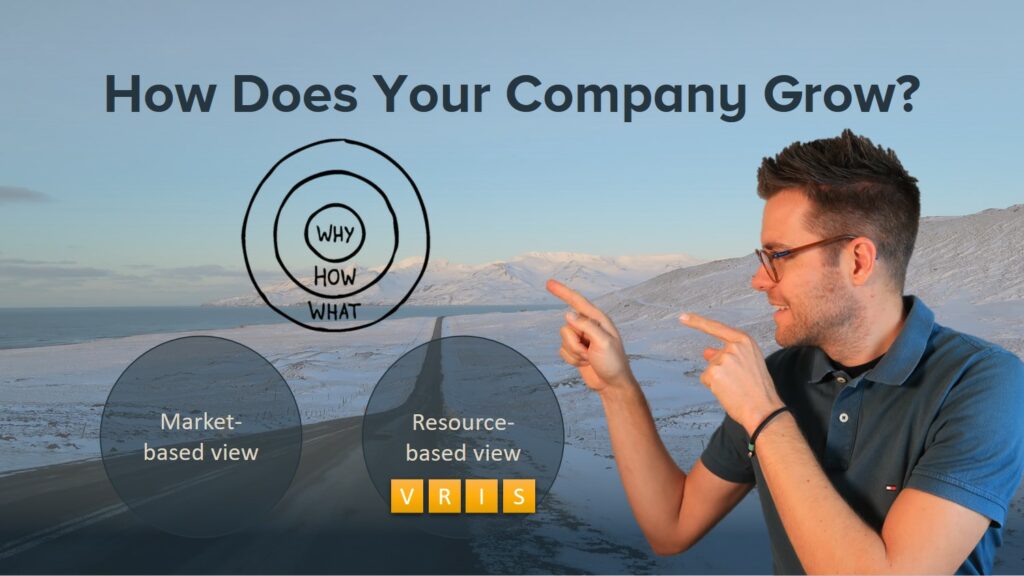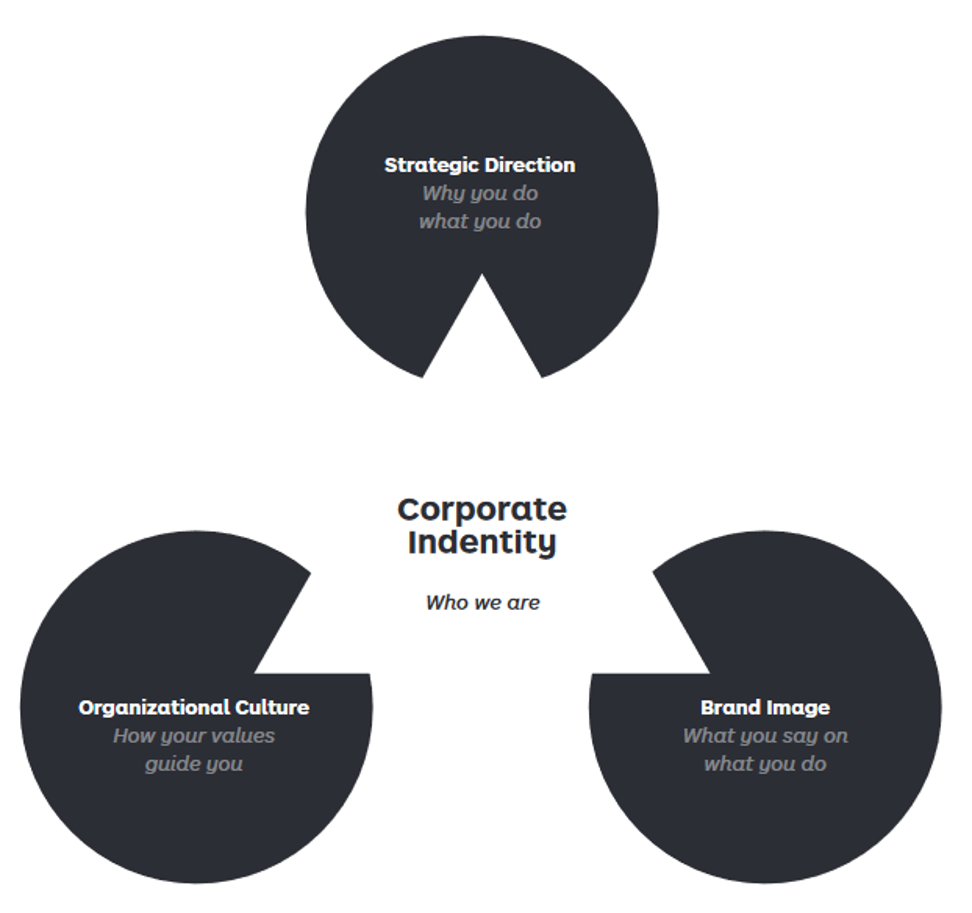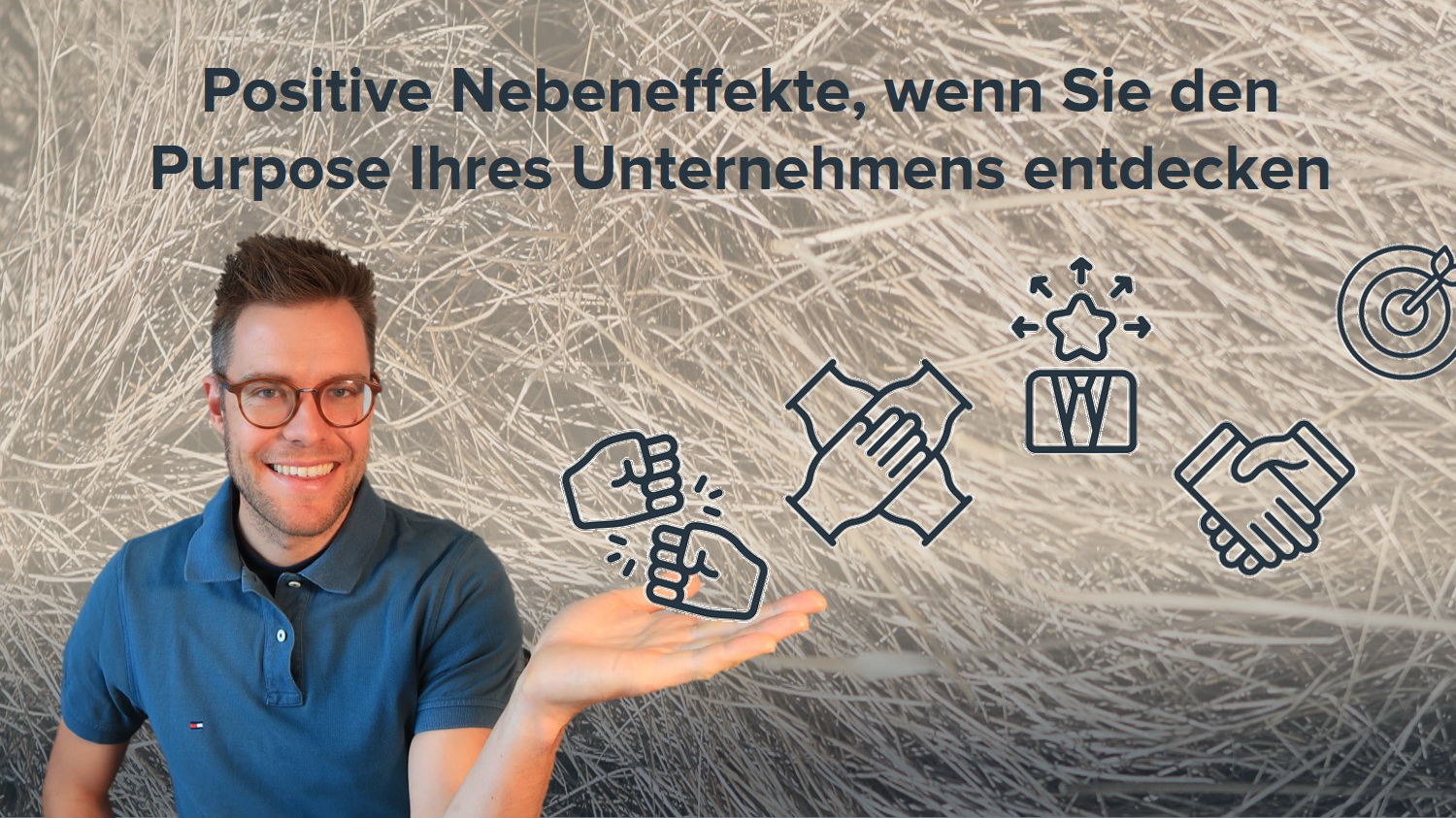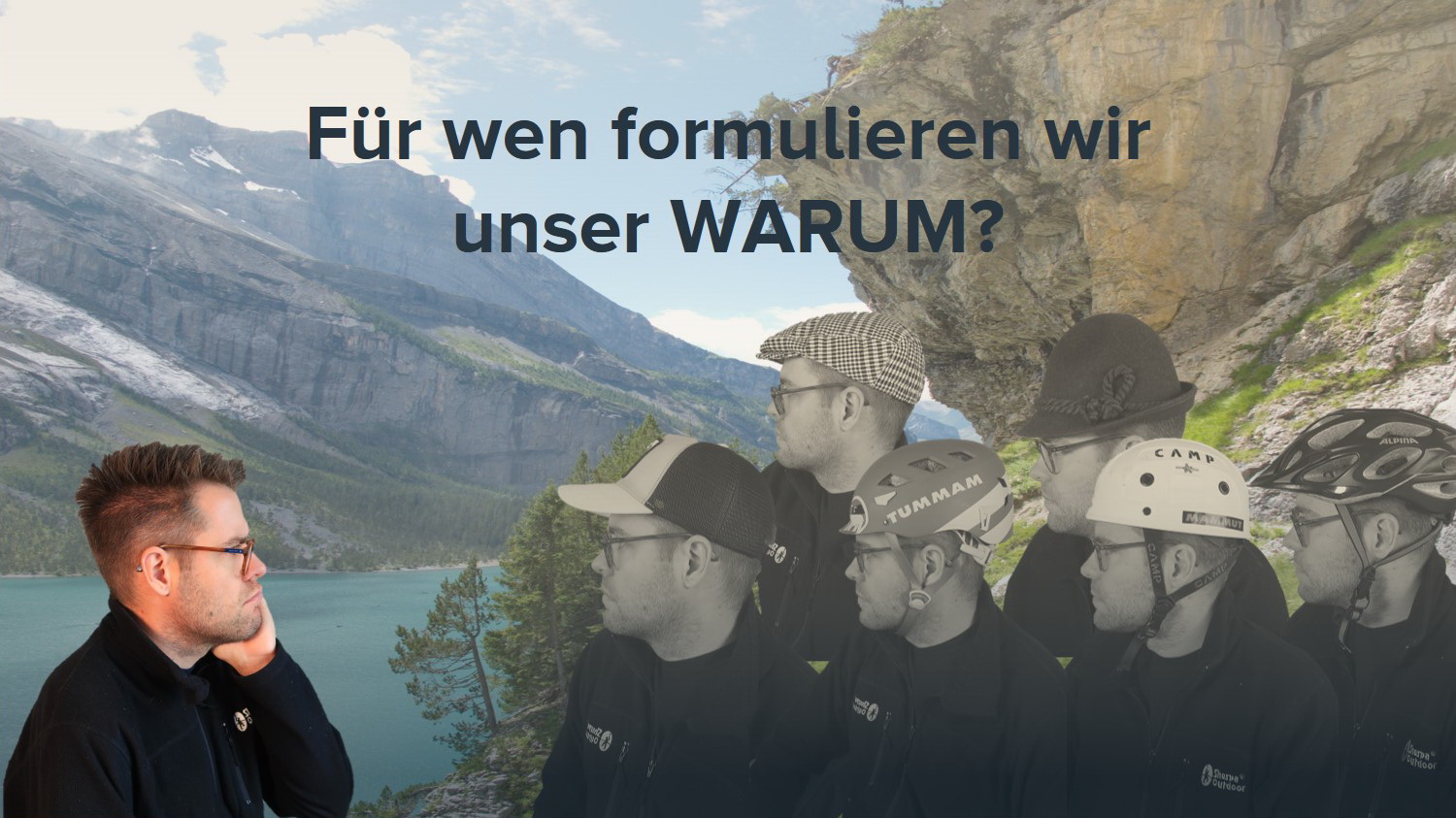How do you approach the strategic development of your company? Are you analysing the market and its needs? Or are you trying to re-orchestrate your company’s valuable resources? In this article I show that the corporate identity (Start with WHY) is a valuable grown resource of the company not only in the daily work, but can also be used for a new strategy. For example, it can be the starting point for new products, services or business areas or provide new ideas for innovations and optimisations.
Inhaltsverzeichnis
The Golden Circle
WHY does our company or our team exist? WHY do we do what we do? What do we make possible in our environment and in society with our business activity? These are the questions addressed by Simon Sinek’s concept: Start with WHY. I have already written articles on how to find the WHY of a company (to the article) and how the WHY can be used internally in the company (to the article). There the concept is explained in more detail and it is also described that from experience companies with quite similar products and services can have quite different WHYs. I like the example of the Italian coffee machine manufacturer La Marzocco. Their WHY is:
We foster relationships to enrich people’s lives.
They make coffee machines, but they are really about people meeting and sharing over a cup of coffee. The company supports this with many events where people can meet and share their enthusiasm for coffee and its preparation (Sinek, Mead, & Docker, 2002).

Conversely, this also means that companies with a WHY or an evolved corporate identity can apply very different products, services and business models. And it is precisely this insight that is exciting for strategic considerations. But let’s start a little earlier:
Different perspectives on corporate strategy
Most companies have a corporate strategy that describes the direction and focus of the business and the company’s development. It is about which markets and customers to serve and how, what resources are needed to do so, and how to grow or innovate. Most of the elements of the mission statement are directed towards the future, and for many of them it is not even clear whether they can ever be achieved or whether they were (deliberately) set far too optimistically or will be cannibalised beforehand by the next strategic realignment. Neither is particularly motivating for employees once they have seen through the pattern. It is different with the WHY. Unlike most other elements of the mission statement such as mission, vision, goals, values, etc., the WHY is not an aspirational or future-oriented goal. In my view, the WHY of a company is part of the corporate identity according to the figure below. The WHY is often formed in the early history of a company, has already shown itself in many different episodes and can therefore rightly be considered a resource of the company. It has a similar effect on employee behaviour as the other elements of the mission statement, and yet it is much more practical and tangible, precisely because it can be linked to examples in the past, experienced every day and communicated with stories. For this reason, in my view, it is at least as important as mission, vision, etc.

Development of a corporate strategy and the different results depending on the starting point
For the development of a corporate strategy, there are classically the two philosophies or almost religions:
- Resource-based view: what do I have that is valuable in my company and how can I use it for my business?
- Market-based view: What does the market demand and how can I satisfy this need?
I would like to add a third view to these two well-known approaches
- Identity-based view: How can we put our WHY into practice?
Each of the three perspectives can be the starting point for new products, services or even a new strategy (markets, business areas, innovations). And depending on the starting point, completely different ideas emerge. I would like to use the example of a small thought experiment with the company La Marzocco to show the diversity and differences of the ideas. This is done without analysing the company in detail. What I do know is that they produce iconic espresso machines and have built up an active community of coffee enthusiasts around the world and continue to strengthen this with many events and offers.
So with the questions from above, we collect ideas together on how a diversification of the La Marzocco company with the 3 philosophies could look like:
| Starting point | Possible ideas |
| Resources | Important resources of the company are probably: |
| Knowledge about coffee preparation: This could be used to run coffee houses, offer courses & training or share knowledge in other forms (physical and electronic). | |
| Building coffee machines: this could be used to build other machines with similar characteristics (depending on how far the knowledge goes), to produce machines under licence for other brands or to use special knowledge of the craftsmen for other purposes | |
| Distribution network / brand name: use elsewhere, business ecosystem | |
| Community: many opportunities for expansion into other areas, matching the lifestyle of these people, support in building a community for other companies | |
| Material resources? | |
| Market | For simplicity’s sake, I’ll assume that you want to serve the same customers. If you have an espresso machine, you also need: |
| Coffee bean production, trading, certification, roasting equipment, tableware, coffee grinders & barista equipment (some of which La Marzocco also offer), water treatment, tonic water for cold brew 😊 etc. | |
| Identity | How to bring people together (over a cup of coffee) and enrich relationships. |
| Pass on knowledge about coffee preparation: see above | |
| Offer space for exchange: Coffee, bar, online, events, cottages, hotel etc. | |
| Improve space: Comfortable furniture, decoration, lighting, music, etc. | |
| Other drinks (tea, beer, wine, spirits) | |
| Enrich relationship: Promote exchange via community, offer online platform, build business ecosystem |
It becomes clear relatively quickly that not all of these ideas make sense. But it is important to understand that depending on the perspective, completely different ideas are possible. Because as with individuals, there are 1000 ways to put the WHY into practice. And it is always helpful to be able to plausibly communicate the new steps, be they strategic realignments or new products, services and optimisations, and to wrap them up in a good story. This results in a comprehensible orientation of the company and improves the connection and understanding of the employees or even customers and partners. I find it very exciting how big and yet still plausible steps in the offer are possible with the corporate identity.
The WHY can also be used for optimisations or innovations. With every product or service, you can ask yourself: How can I implement the WHY even better with this element?
Moreover, the WHY can be useful to build an emotional connection with customers or partners. Which communication is more inspiring in the case of La Marzocco:
We build great coffee machines by hand. You’ve never had such a good espresso before.
Or
We foster relationships to enrich people’s lives. Enjoy a cup of espresso.
To do this, the WHY must be made known outside the company. For example, can it be integrated into the presentation of the company, on the website, in email signatures or the advertising for the offers? Again, creativity is needed and there are no limits to the ideas.
Conclusion and long-term success
There are different approaches to developing new ideas or strategies. These produce different results, as La Marzocco’s thought experiment shows. With the help of the WHY, new ideas can be gained and communicated. It also shows that the results of the identity-based approach (WHY) are closer to those of resources than the market-based view. For me, corporate identity can also be seen as a kind of resource.
How do you work with the WHY? Above all, the WHY statement needs to be kept in conversation and used on an ongoing basis. Stories and experiences about it can be easily shared, but it has to be done. This also ensures that the company does not move away from the original identity over time and with many adjustments of direction. And once you have communicated the WHY of the company, then you have to act on it. That goes without saying.
evores supports you and your team to find the WHY in your team, to communicate it, to use it in the daily business and in the strategy and to keep it alive. Have fun discovering the possibilities of your WHY.
Further information and sources
Book Invincible Company: Osterwalder, Alex, Pigneur, Y., Etiemble, F., & Smith, A. (2020). The Invincible Company. Strategyzer.com.
Book Find your WHY: Sinek, S., Mead, D., & Docker, P. (2002). Find Your Why. A practical guide for discovering purpose for you and your team.
-
Positive Nebeneffekte, wenn Sie den Sinn Ihres Unternehmens entdecken
Es ist eine Reise für sich, den Sinn (Unternehmenszweck, WARUM) eines Unternehmens zu entdecken. Oft geschieht dies im Rahmen eines ein- bis zweitägigen WARUM Workshop mit einem gemischten Team mit Personen aus verschiedenen Abteilungen und Ebenen des Unternehmens. Dieser gemeinschaftliche Prozess hat aus meiner Erfahrung viele positive Nebeneffekte, die über die Formulierung des Unternehmenszwecks hinausgehen.…
-
Für wen formulieren wir das WARUM einer Firma?
Das Konzept des WARUM ist in den letzten paar Jahren das Trendthema der Geschäftswelt. Viele erfolgreiche Unternehmen wie Apple, Southwest Airlines und Patagonia haben ihren Erfolg auf einem klaren und inspirierenden Unternehmenszweck (WARUM) aufgebaut. Und auch unzählige andere Unternehmen arbeiten mit dem Unternehmenszweck. Aber für wen formulieren wir das WARUM unserer Firma? Wer ist die…
On the author

Claudio Lehmann is founder and consultant at evores. As an engineer and management consultant, he is fully committed to making the existing potential in companies visible and utilising it. Long-term sustainability starts with motivated employees and goes through efficient collaboration to the innovative strategy of companies that bring value to society. People. Planet. Profit.
Get in contact with me!
Article keywords

